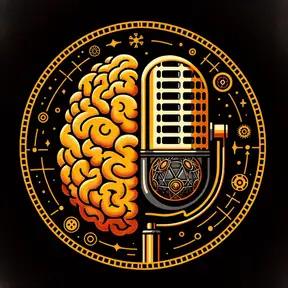Why Your Surgeon Wears Special Socks: The Psychology of Talismans and Lucky Charms
The Power of Talismans: Mind Over Matter
In this episode of PsyberSpace, host Leslie Poston explores the fascinating world of talismans, lucky charms, and rituals. While these objects may seem irrational at first glance, psychological and anthropological insights reveal they significantly alter how our brains handle risk, uncertainty, and stress. From ancient warriors to modern surgeons and athletes, humans have always used symbolic objects to manage anxiety and enhance performance. This episode dives into the neuroscience of belief, the anthropology of ritual, and the line between helpful superstition and harmful compulsion. Discover how these practices, whether physical or digital, help us face uncertainty and regulate our emotions, anchoring us in chaotic situations.
00:00 Introduction to Talismans and Rituals
00:53 The Psychology Behind Talismans
01:27 Historical and Cultural Perspectives
02:39 Modern Examples and Psychological Mechanisms
05:24 Rituals in High-Stakes Professions
07:30 Sports and Performance Enhancement
10:30 The Placebo Effect and Physical Properties
13:25 Cultural Significance and Adaptation
16:20 When Rituals Become Unhealthy
19:40 Digital Age Talismans
22:14 Conclusion: The Power of Belief
References
In this episode of PsyberSpace, host Leslie Poston explores the fascinating world of talismans, lucky charms, and rituals. While these objects may seem irrational at first glance, psychological and anthropological insights reveal they significantly alter how our brains handle risk, uncertainty, and stress. From ancient warriors to modern surgeons and athletes, humans have always used symbolic objects to manage anxiety and enhance performance. This episode dives into the neuroscience of belief, the anthropology of ritual, and the line between helpful superstition and harmful compulsion. Discover how these practices, whether physical or digital, help us face uncertainty and regulate our emotions, anchoring us in chaotic situations.
00:00 Introduction to Talismans and Rituals
00:53 The Psychology Behind Talismans
01:27 Historical and Cultural Perspectives
02:39 Modern Examples and Psychological Mechanisms
05:24 Rituals in High-Stakes Professions
07:30 Sports and Performance Enhancement
10:30 The Placebo Effect and Physical Properties
13:25 Cultural Significance and Adaptation
16:20 When Rituals Become Unhealthy
19:40 Digital Age Talismans
22:14 Conclusion: The Power of Belief
References
Atkinson, P. (1981). The clinical experience: The construction and reconstruction of medical reality. Gower.
Bandura, A. (1997). Self-efficacy: The exercise of control. W. H. Freeman.
Berle, D., Starcevic, V., Wootton, B., Arnáez, S., & Baggio, S. (2023). A network approach to understanding obsessions and compulsions. Journal of Obsessive-Compulsive and Related Disorders, 36, 100786.
Damisch, L., Stoberock, B., & Mussweiler, T. (2010). Keep your fingers crossed! How superstition improves performance. Psychological Science, 21(7), 1014–1020.
Davoudi, M., Mohammadzadeh, A., Vafaei, A., Mirzaei, S. M., & Ghanbari Jolfaei, A. (2024). A cross-sectional study in two common OCD subtypes: Network structure of symptoms, personality, and obsessive beliefs. Frontiers in Psychiatry, 15, 1330901.
Einstein, D. A., & Menzies, R. G. (2004). The presence of magical thinking in obsessive–compulsive disorder. Behaviour Research and Therapy, 42, 539–549.
Einstein, D. A., & Menzies, R. G. (2004). Role of magical thinking in obsessive–compulsive symptoms in an undergraduate sample. Depression and Anxiety, 19, 174–179.
Edwards, C. D. (2023). Obsessive–compulsive disorder in sports—Beyond superstitions. Advances in Psychiatry and Behavioral Health. Advance online publication.
Fite, R. E., Adut, S. L., & Magee, J. C. (2020). Do you believe in magical thinking? Examining magical thinking as a mediator between obsessive–compulsive belief domains and symptoms. Behavioural and Cognitive Psychotherapy, 48(4), 454–462.
Frazer, J. G. (1996). The golden bough: A study in magic and religion. Oxford University Press. (Original work published 1890)
Langer, E. J. (1975). The illusion of control. Journal of Personality and Social Psychology, 32(2), 311–328.
Rabinovitch, H. (2025). Playoff beards and unwashed uniforms: A scoping review on athletes’ superstitions and rituals. International Review of Sport and Exercise Psychology. Advance online publication.
West, B., & Willner, P. (2011). Magical thinking in obsessive–compulsive disorder and generalized anxiety disorder. Behavioural and Cognitive Psychotherapy, 39(4), 399–411.
Vyse, S. A. (2014). Believing in magic: The psychology of superstition (Updated ed.). Oxford University Press.
Creators and Guests


